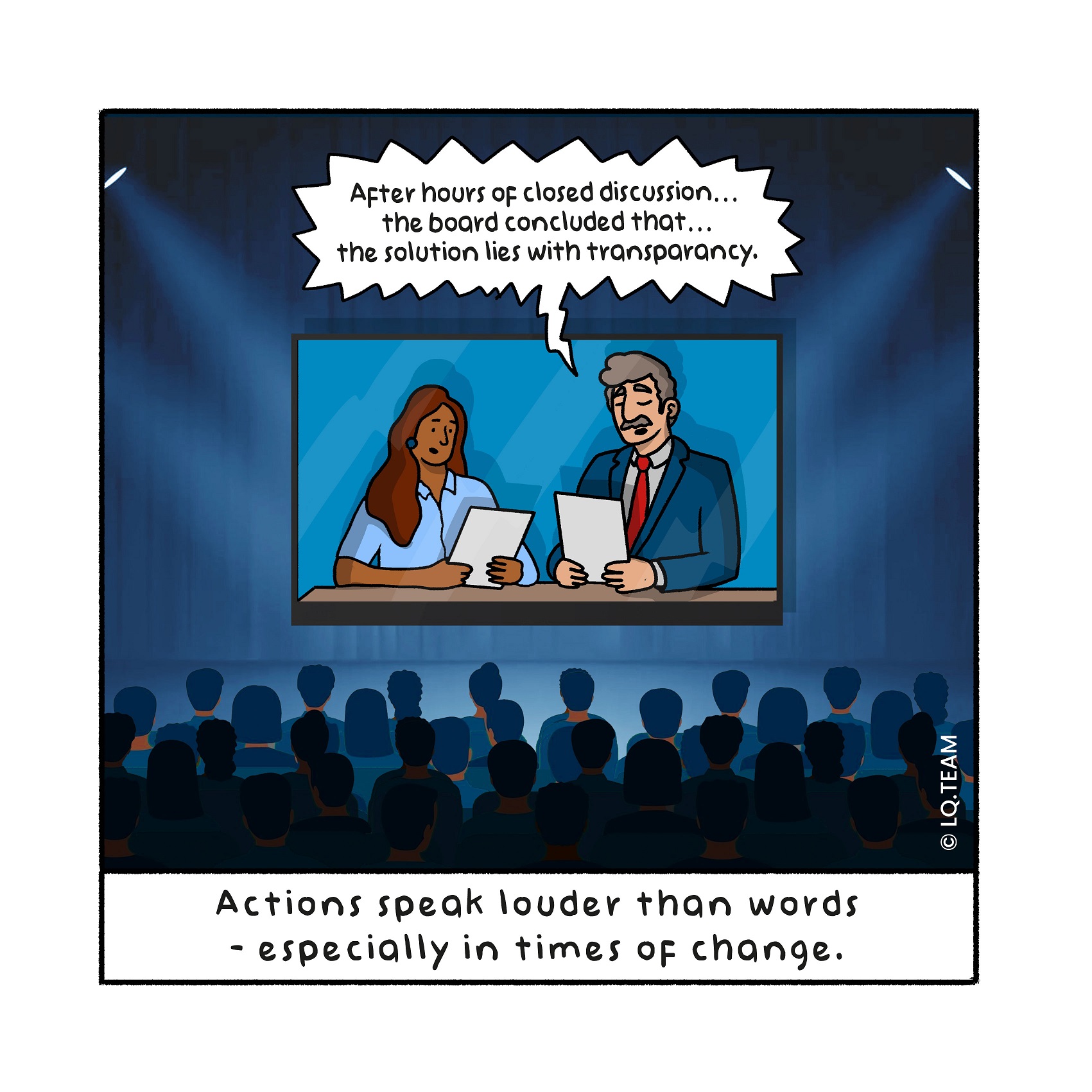
Nut to crack: How do you ensure your message is the same verbally and non-verbally?
At the time of change, you, as a person and as an organisation, are more often judged on what you do than on what you say. People get information from how you greet the receptionist, how you dress, and whom you congrat- ulate on what. How do you ensure that you are consistent in your messaging, non-verbally?
Nutcracker: Redesign the organisational symbols to reinforce your message
Since, as a leader, and in the broader sense also as an organisation, you are judged primarily by what you do instead of what you say, it is powerful to consciously examine the organisational symbols that portray the non-verbal story. For example, which events do you celebrate and why, and which would you like to celebrate, looking at the core of your change message? If you are creating a key account strategy, it is not logical to celebrate every sale above one hundred thousand euros; it makes more sense to celebrate when the total revenue of a key account is above five hundred thousand euros. Or, for example, what is displayed on the digital public organisation screens, and what should be on there when taking the most critical change you intend to realise into account? Suppose you are committed to growth through strategic partnerships; then make sure that newly established partnership contracts are displayed on the screens so people sense the importance. The symbol identification tool gives you an idea of which organisation symbols there are so that you can redesign them consciously. The example illustrates how to reinforce a merger message using symbols.
Support tool: Symbol identification tool
The following model helps you to remember which elements in an organi- sation show non-verbally what is essential and what is not, how you should behave and how not to behave, or which players are really in charge. This model is derived from the cultural web published by Johnson, Whittington and Scholes in 2014. The six elements from the web form an excellent step- ping stone to discussing which symbols reinforce the organisational culture you want and which detract from it.
By subsequently changing those symbols, you can ensure that you also prop- agate the desired organisational culture non-verbally. In my previous organi- sation, for example, that meant placing stickers with “hold the handrail” on the bannisters of the stairs at head office to endorse a culture where safety was paramount everywhere, and not only to be observed in the factories.
Real-life example: The power of symbols
In the case of a merger of two logistical opposites, one party fears domination by the other because it is the majority shareholder. There is already a lot of informal chatter; employees of the acquiring party believe that the acquired party must learn that oppor tunistic and entrepreneurial action is more important than sticking to a plan, while the acquired party fears that the professional character of the organisation will be wiped out by the enterprising yet chaotic nature of the acquiring party. However, the acquir ing party knows that the success of this merger will depend on building on the unique strengths of both companies, especially in the ways of working.
Board members worry about making it clear that both organisational cultures are equally valuable and that only a combination will lead to sustainable business results. How do they make this apparent to all employees, not only in words but also in deeds?
One evening, the supply chain director comes up with a brilliant move. He organises the following. The trucks of one company are blue, and the others are green. He couples blue trailers with green cabs and combines green trailers with blue cabs. This way, he composes two types of twofold coloured trucks, symbolising the combination’s power. Hundreds of these trucks are on the road in Europe every day, so truck drivers and other road users (including other employees and customers) are confronted with this composite colour image. This image is subsequently used in every presentation; it im mediately shows that both companies remain essential for future success.
Tip for change leader
Be aware of the impact of every step you take: which rituals and customs you will say goodbye to, and which ones you will introduce to make your behaviour consistent with what you say. Every change starts with “I”.
Tip for change enabler
A work session with a selected group of employees often provides surprising insights. Use the symbols tool and explore which symbols align with the change message and support it and which don’t. Then take this information to the change leaders and let them convert the data into decisions and actions.
Kernel: Adjust symbols to put the change promise into practice
To get the change promise across, it’s important to say goodbye to symbols that belong to the “old” world and to create and embrace new symbols. Think, for example, of new rituals and routines.
It helps to know precisely which beliefs you want to keep and which you want to let go of, which was addressed in Challenge 36.
